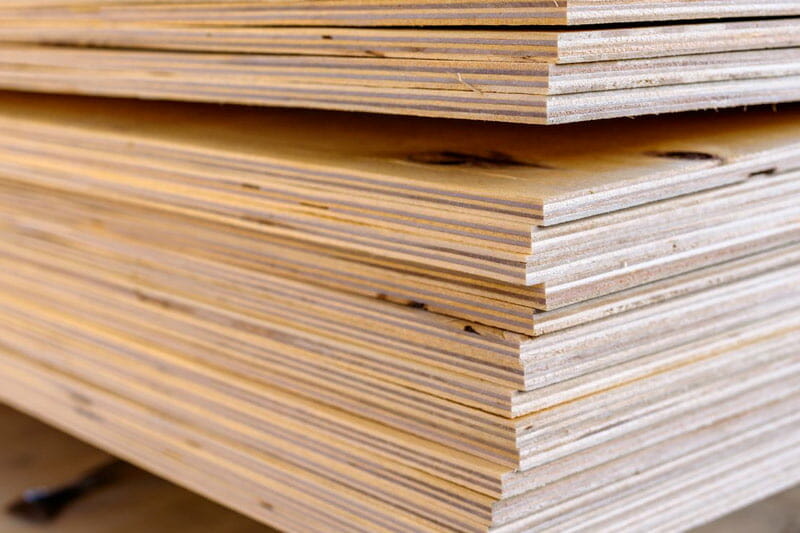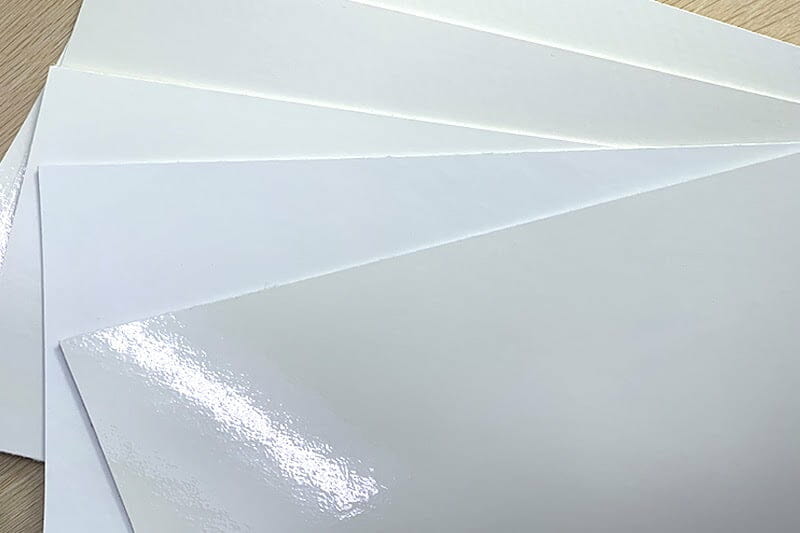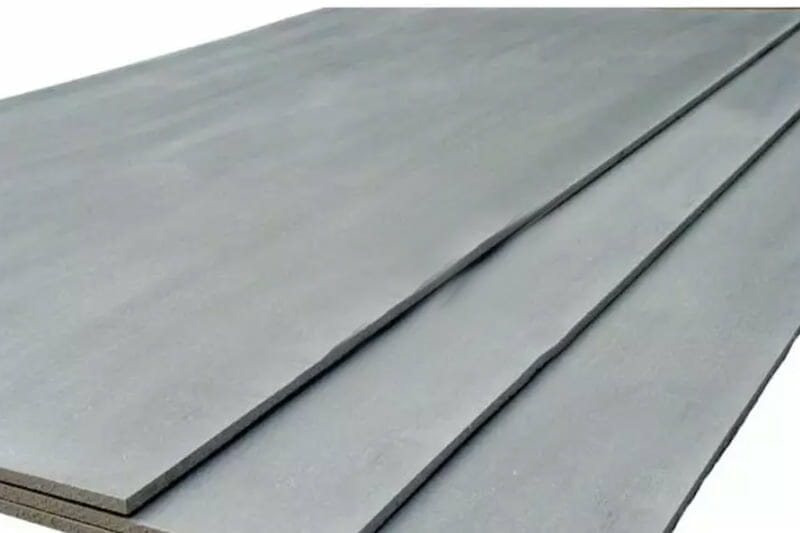Drywall often tops the list for building projects, but it’s not always the perfect match for every corner of your home. Think wisely about the pros and costs before you pick drywall for your garage.
Yes, you should drywall your garage. This is because it is an extremely cost-effective way of finishing a garage. It will also make your garage look better while allowing you to comply with building codes that require the installation of a fire-resistance wall system between the garage and an adjoining wall.
Here is what you should know.
Why should you drywall your garage?
Drywall is a cost-effective construction material. Most homeowners opt for it as a way of saving costs.
But the reasons why choosing drywall is prudent, go way beyond cost considerations. Here are the main ones.
- It is an easy way of boosting fire safety
- To improve your garage’s insulation
- To hide plumbing and wiring
- It boosts the resale-ability of a home
- To improve the home’s resale value
- It offers better soundproofing
- To comply with building codes in your area
It is an easy way of boosting fire safety
Drywall is made up of mineral gypsum. This makes it a naturally fire-resistant building material. And this is one of the main reasons why regular drywall can withstand direct flames for up to 30 minutes.
Therefore, using it to cover garage walls is an easy way of making the garage less vulnerable to fire.
To improve your garage’s insulation
Drywall has good insulating properties. Adding insulation to already-installed drywall is easy. And so is installing insulated drywall.
This is beneficial because, with your garage insulated, you can be able to work all year round. The insulating quality of insulated drywall will minimize extreme temperature fluctuations, and this will make it more comfortable for you to work in it.
To hide plumbing and wiring
A room with exposed pipes and electrical wiring is unsightly. A garage is no exception.
With drywall, you can cover all the unattractive stuff in your garage. You can even make the garage safer and reduce the risks of accidents when you cover sensitive features and fixtures like natural gas supply pipes.

It boosts the resale-ability of a home
Finishing a garage with drywall gives it a “Wow” factor.
The finished look tends to be more appealing and more attractive to most buyers. And so when comparing a home with an unfinished garage with one that has a finished garage, potential buyers will almost always go for the one with a finished garage.
To improve the home's resale value
Studies show that for the right buyer, a finished garage can generate anywhere between $7,000 and 10,000 in resale value. When compared to the minimal cost of finishing a garage with drywall, opting to drywall a garage is financially prudent as it offers the promise of a great return on investment.
It offers better soundproofing
Installing drywall in your garage will reduce the amount of noise that reaches your living space. This is because drywall is generally a good soundproofing material. This is so especially when double sheets of drywall are used together with the right type of drywall mud.
To comply with building codes in your area
Most local authorities require builders to install fire-resistant wall systems on garage walls that separate the garage and living space.
Type X drywall is a popular choice for most homeowners mainly because of its effectiveness. As a result, it offers homeowners a convenient way to comply with building and safety codes.
Cost to drywall a garage wall
The cost of drywalling a garage varies widely depending on the size of the garage, the type of drywall, and the average labor costs in the area where the installation has to take place.
Other factors like the need for additional framing, electrical wiring, and insulation, also play a role in determining the overall cost of the project. Whether your garage is an attached garage or a detached garage also matters — a detached garage does not have a common wall and so fireproofing is not mandatory.
Here is a general breakdown of the cost of installing drywall in a garage.
Size of the garage
| Garage Size | Dimensions | Low | High |
|---|---|---|---|
| 1-car Garage | 14’ x 22’ | $616 | $1,848 |
| 2-car Garage | 24’ x 22’ | $1,056 | $3,168 |
| 3-car Garage | 34’ x 22’ | $1,500 | $4,488 |
Cost per square foot
| Low (per square foot) | High (per square foot) | |
|---|---|---|
| Average total cost | $1 | $1.50 |
| Labor | $0.5 | $0.75 |
| Materials | $0.50 | $0.75 |
| Finishing | $0.5 | $1.50 |
What is the return value of hanging drywall in a garage?
While most realtors agree that finishing a garage is beneficial, they also often conclude that hanging drywall does not have a direct effect on the selling price of a home.
The drywall can make the garage to be more appealing, look spacious, and give it a higher fire rating. It can even increase the likelihood of it being picked off the market faster. But as far as the sale price is concerned, it is of little to no value.
However, in the case of high-end homes or when targeting an exclusive clientele, finishing a garage by hanging drywall can add up to over $10,000 if you land on the right buyer.
Things you should figure out before drywalling a garage
While hanging drywall is not complicated, it can be cumbersome and time-consuming. However, there are things that you can do to make the process easier.
Here are some of the things that you should do, or figure out, before starting the installation process.
Framing
Drywall is heavy. It needs a good support system in order to be properly secured in place. This is why installing adequate framing is one of the first things that you should ensure that your garage has.
If your garage walls do not have sufficient framing, then you will need to add a few nail blocks or studs before hanging drywall. Additional framing may also be necessary if you need to divide the garage into sections. Doing so may end up saving you a lot of money down the line.
Insulation
Before you drywall your garage, you need to figure out what type of insulation you are going to use. Installing the insulation, way before hanging drywall, is also recommended. This is because drywall typically covers and hides insulation. Furthermore, by installing the insulation before hanging drywall, you will not only save on time, but also on money.
Location of wall studs and electrical wiring
You also need to figure out where the wall studs are located, how your electrical wiring is installed, the location of the garage door, and the footer and header of the wall space. A good way of noting this information is to take pictures. A clear video recording will also work. Doing so will help to make it easier to make other installations down the line.
Tools
Another thing that you should do is to collect all the tools that you will need to comfortably install the drywall. The tools that are a must-have include a drywall knife, a dust mask, a power drill, a drywall saw, a utility knife, and fine-grit sandpaper. A drywall lift can also come in handy, especially if you don’t have any help from your friends or family.
Materials
Collecting all the materials that you will need will make the process smoother. You will need to make sure that you have
- Mesh drywall tape,
- Enough drywall mud or drywall joint compound
- Paper drywall tape or mesh tape
- Fasteners
- Enough drywall sheets
- Fiberglass insulation — if you are planning on insulating your garage
What are the alternatives to using drywall in the garage?
While drywall is one of the cheapest ways to finish garage walls, it is not the only option. Alternatives to drywall exist, and a significant portion of homeowners opt for these alternatives mainly because they tend to have some advantages over drywall.
Here is a list of the most popular drywall alternatives.
Plywood
Plywood is an excellent low-cost alternative to drywall. It is lighter, making it easier to install. It has better structural strength, making it a great option for hanging items in garages. And it has a way better impact resistance, something that goes a long way towards making it a more durable option.

Veneer plaster
If you have an old garage, veneer plaster can be an excellent option for you. It is perfect for refreshing the looks of old garage walls by giving them a fresh, easy-to-maintain, and lasting covering. It also provides a high-quality finish that is generally more attractive than drywall. And while it may consume relatively more time to install, some homeowners opt for it primarily because of the superior finish.

FRP
If you are looking for garage finishes that are moisture-proof and mold-resistant, you should definitely look into using fiberglass-reinforced panels. These panels are extremely easy to maintain and install. And while not all of them can be directly attached to wall studs, they are often a convenient solution for homeowners who are looking for a fast and easy wall finish.

Slatwall and pegboard panels
Slatwall panels and pegboard panels are wall coverings that are specifically designed to make garage walls more useful. They come ready-made with a number of hooks, shelves, and pegs that make it easier to store or hang items in a garage. They are thus a perfect solution for anyone who doesn’t want to struggle with locating studs and installing hooks on drywall walls.

Metal panels
Metal panels are way more durable than drywall. And since most of these panels come already primed for screwing right onto wood framing, they tend to be easy to install. Add this to the fact that they tend to give a garage a premium and high-end feel, and it is easy to see why a homeowner would choose copper, steel, or iron panels over drywall.
Cement board
Cement board is a construction material that is both mold-resistant and moisture-resistant. It is way better suited to handle wet or moist conditions — when compared to drywall. And it has a degree of fire resistance that enhances a home’s fire safety. It also tends to offer a more attractive finish than drywall.

FAQ's
To make your garage more spacious and organized, you may want to hang items on the garage wall. But the question is, once you cover an existing wall with drywall, how much weight can the wall bear?
If you are planning on hanging heavy items like shelves in your garage, you can’t hang them directly on the drywall.
But you can always hang them by attaching them directly to the studs. Use a stud finder to find the studs and then drive large screws into them. This will work because when you affix anchors or drywall screws directly to the studs, you can easily hang up to 100 pounds on the garage wall since you won’t be depending on the drywall to bear the weight.
Yes, you can drywall your garage ceiling. In fact, drywall is often recommended for garage ceilings. This is because it is economical and easy to install.
Yes, you should insulate a detached garage.
Insulating the garage will make it more comfortable to use during winter. If you have machinery that is sensitive to extreme temperatures, insulating the detached garage will also help to reduce how badly the machinery will get compromised as the insulation will help to keep the detached garage temperatures from going to an extreme.
Yes, you should drywall an unheated garage.
The garage being unheated won’t have an effect on the durability or attractiveness of drywall. For such a garage, drywall will still be a good material because it is one of the cheapest materials for finishing a garage. It is also easy to install. And it offers a respectable degree of fire resistance and soundproofing.
However, when you drywall the unfinished walls of an unheated garage, it won’t do much as far as improving the energy efficiency of the garage. This is so mainly because drywall has a low R-Value. And if you really want to make the garage comfortable during winter, then you will need to install the drywall with insulation.
No, you don’t have to install fire-code drywall in a detached garage. You also don’t have to install it on the exterior walls of an attached garage.
This is because residential building codes usually require that it be installed on walls that are shared with the main living area. And since a detached garage does not typically have any shared walls of separation with the main living area, there is really no need to fire-rate any of its walls.
Therefore, installing Type X or C Drywall — fire-resistant or fire code drywall — is only necessary in cases where a homeowner has an attached garage. While he or she can still install this type of drywall in a detached garage, it is often an unnecessary expense.
No, you don’t need to fire-rate it.
Building codes and fire safety regulations typically require the installation of a fire-rated separation wall or ceiling when a garage shares a wall or ceiling with the main living space. Therefore, if you have a detached garage, it doesn’t have to have a fire-rated ceiling. The ceiling of an attached garage also does not need to be fire-rated if there isn’t an extension above the garage’s ceiling.
However, if there is an extension above the garage, then the ceiling will need to be fire-rated. This is because the ceiling will be deemed to be a separation wall. And laws regularly require separation walls to be fitted with some form of fire-resistant material.
If you need help drywalling your garage, you should visit HomeGardenGuides.com. It offers a free service that quickly matches you with the top-voted local experts.
Using the website, you can get 3 estimates fast by real certified experts in your area in just 2 minutes. Here is how it works.
- You scroll to the top of the page and enter your Zip code.
- Answer questions about your remodeling needs
- Your details will be forwarded to three local experts.
- You will then receive a price estimate for the job and some friendly advice.
IMPORTANT: There is no obligation to hire. This is a free tool and service to be used at your pleasure.







